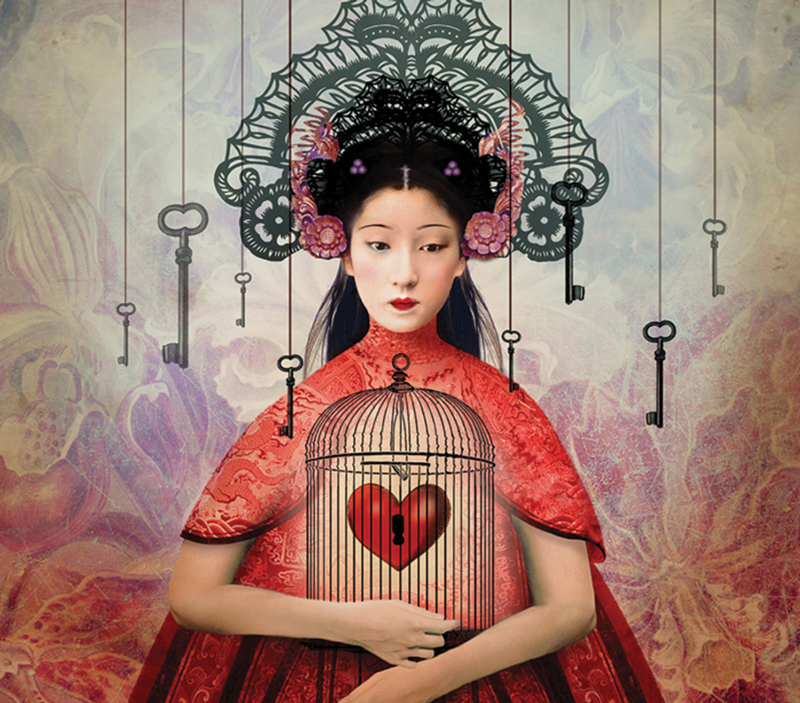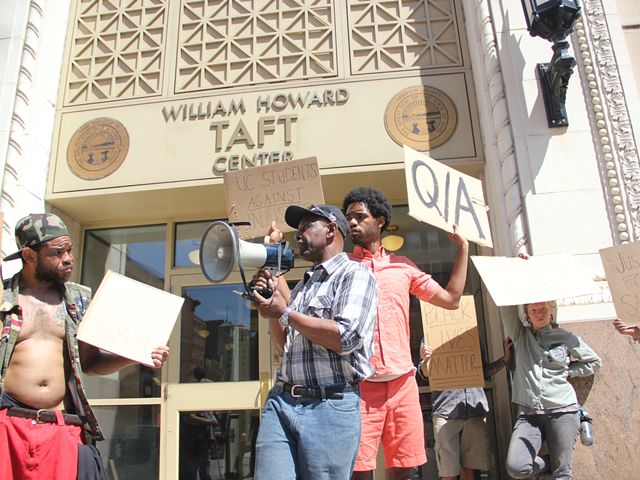Cincinnati Opera winds up its 95th season in truly grand operatic fashion with an opulent production of Puccini’s Turandot. The singing is (mostly) sublime, the spectacle is lavish and all the production elements are executed with stylish precision.
The opera is a fantasy based on a play by the Venetian Carlo Gozzi. Turandot is a Chinese princess bent on revenge for the rape and murder of an ancient ancestor. If a prospective suitor fails to answer three riddles, off with his head. That doesn’t discourage Prince Calaf, who manages to solve the riddles and melt the ice princess’s reserve. Oh yes indeed, this is a fairy tale.
It’s also Puccini’s grandest opera with fabulous music incorporating romance, drama and Chinese folk melodies. The score was unfinished when Puccini died in 1924; composer Franco Alfano composed the final section using Puccini’s sketches. Despite Calaf’s signature aria “Nessun Dorma,” the best music belongs to the chorus and the two female leads.
Biggest ups to the chorus. They sing with power, precision and a remarkable dynamic control thanks to Chorusmaster Henri Venanzi, who celebrates his 41st year with the CO. Unlike most other operas that feature one big choral number and that’s it, Turandot’s chorus is onstage for almost the entire piece.
Marcy Stonikas is a formidable Turandot, physically and vocally. Her voice has the cold, steely edge for an ice princess but there’s a hint of warmth that fully emerged in the final scene to convey a sense of humanity. “In questa reggia” is Turandot’s big aria and Stonikas did not disappoint. Hers is one of the most exciting voices I’ve heard in a long time and I hope she’ll be back.
The role of the slave Liu usually steals the shows and this was no exception. French soprano Norah Amsellem sings with haunting delicacy and tremendous power. It’s a performance to savor, and she garnered the evening’s loudest ovations. And her limping on the stage was no act — she injured an ankle earlier in the week and was using a brace.
Frank Porretta’s Calaf was barely audible in the first act. He may have been having vocal problems because he powered up in the second act, but “Nessun Dorma” was under pitch and lagged behind the orchestra. Let’s hope he recovers for the remaining performances.
As the court officials Ping, Pang and Pong, Jonathan Beyer, Julius Ahn and Joseph Hu were genuinely responsive Puccini’s score, offering characters ironically comic and human as they sing of returning home. They also executed a vaudeville soft shoe routine with panache.
Bass Andrea Mastroni made an impressive debut as Calaf’s father, Timur. Tenor Chris Merritt sang the Emperor Altoum with poignant beauty.
Under the baton of Ramón Tebar, the Cincinnati Symphony Orchestra gave a stunning performance of this magnificent score. There are so many gorgeous subtleties, from the loudest of gongs to shimmering woodwinds and strings, and they were heard to wonderful effect.
Red is the operative color for André Barbe’s sets and costumes, with black and white running close seconds. A huge red lacquer arch is the main set piece, punctuated by huge white heads on pikes, reminders of the executed princes. The chorus, mandarins and dancers are swathed in black and red. Ping, Pang and Pong sport sky-blue robes, and Turandot and Emperor Altoum are garbed in white. It’s opulent but never excessive.
Most impressive are Renaud Doucet’s staging and choreography. The huge cast of choristers, supernumeraries and dancers move with confidence and precision. Fortunately for us all, the leads are equally graceful and they respond to each other with more than outstretched arms. Doucet creates stage pictures that, for all their scope, never lose focus on the performers. The dancers are a special pleasure. Their costumes with multiple flags projecting from the back don’t make for easy movement, but they make it look effortless.
Go see it. And go hear it. There aren’t many opportunities to see spectacle like this, unless it’s Andrew Lloyd Webber, who mined Puccini’s melodies for inspiration. Puccini did it way better.
TURANDOT continues Wednesday and Friday. More info here .







